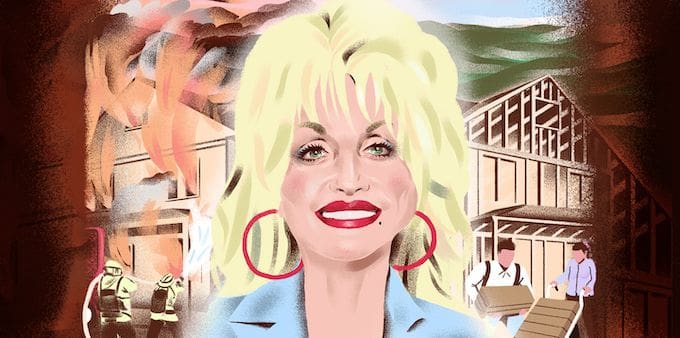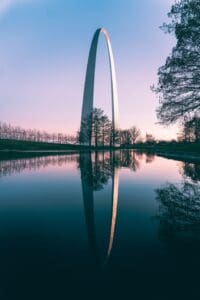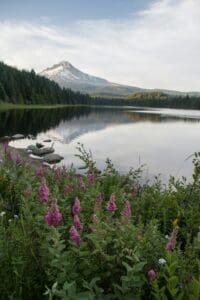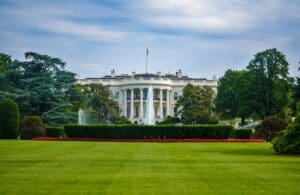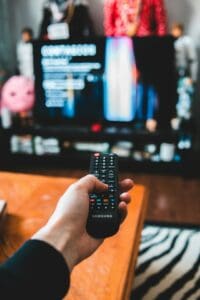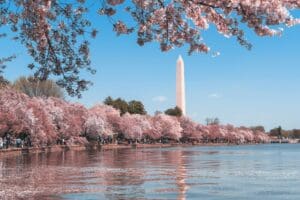Article originally published on April 19, 2019.
Gatlinburg, Tenn. — A billowing haze really does thread through Great Smoky Mountains National Park. The famous fog gives this part of East Tennessee a mystical quality, and tourists flock here because it’s a gateway to the most visited national park in America.
Gatlinburg is also one part of the Appalachian version of Vegas, with its own garishly-lit Strip. The rest of the attractions are 15 minutes away in Pigeon Forge, home to the Dollywood theme park and every kind of dinner theater you can imagine — Hatfield & McCoy, Biblical Times, Dolly Parton’s Stampede.
Dolly Parton is everywhere here. The fourth of twelve children born into abject poverty in nearby Sevierville, the musical and feminist icon now primarily lives in Nashville, but remains actively involved in Sevier County, boosting the local economy with her branded attractions and providing support through the philanthropic efforts of her Dollywood Foundation.
It’s these efforts that drove me to visit the Great Smokies in February.
Parton’s literacy program, Dolly Parton’s Imagination Library, recently donated its 100-millionth book. She holds two Guinness World Records, including one for being the only country music artist with top 20 hits across six consecutive decades, but she refers to the Library as the most important thing she’s ever done. The program, which has donated books to over a million kids throughout the world, originated locally.
In the early 1990s, the high school dropout rate was extremely high in Sevier County. “Running close to 40 percent,” says David Dotson, the longtime president of the Dollywood Foundation.

He remembers Parton had a “notion that each seventh and eighth grader would get a buddy and sign a contract that committed them to helping each other graduate from high school. If both graduated, she said, ‘I’ll personally give you a $500 check on honors night.’” The dropout rate dropped to six percent for those two classes, he says.
After that, the foundation decided to focus its activities on helping children achieve literacy, and the Imagination Library was born in 1995. Children whose families sign them up receive a new book in the mail every single month from birth through kindergarten.
“The key elements that were devised are still in play 20 years later: making reading fun and exciting, and not feel like charity or a handout,” Dotson says. “It had to be really personal, and that’s why you have the child’s name on the mailing label. And there had to be lots of them. You know, Dolly wouldn’t give a kid one book — she’s gonna give them 60.”


Dollywood Foundation staff use the term “Dolly-ize” to describe their philanthropic philosophy. Dotson explains: “How do you take something and add the accessories to it, if you will, and really — more importantly — add the soul, the touch of Dolly. Because when Dolly does something, it’s big, it’s exciting, it’s personal, and it’s effective.”
When a wildfire swept through Gatlinburg four days after Thanksgiving in 2016, this was exactly the kind of approach Parton catalyzed. She instinctively decided that what people needed most was unconditional cash.
The results may hold lessons for policymakers considering novel ways of using money to address both disaster recovery and economic inequality.
‘IT’S JUST SMOKE’
2016 was a very dry year in East Tennessee, as the American Southeast endured its worst drought in a decade. Officials had banned all fires in the Great Smoky Mountains National Park, but one — started by humans — was reported on Nov. 23.
Given the lack of humidity in the region, there had been a few forest fires that season so Gatlinburg residents were used to smoke wafting about town. But on Nov. 28, it was smokier than usual.
David Reed, who works in sales and marketing for a local travel company, says he and his family spent most of the day inside their house with washcloths to their mouths. “We had some awareness of fires in the area; we knew them to be about five or seven miles away,” he recalls.


Wanda Tippie, a retired municipal worker tells me, “It was smoky out but I kept sitting on the porch not thinking much of it because I knew it was still in the national park. It’s just smoke. But then the lights kept flickering and I thought I better get out.”Tippie threw a few things in the car and when she drove up around the corner on a hill near her home, she says, “The fire was right there. I had to turn around and head downtown. It was pretty scary to have all the ash falling on you, thinking, ‘I’m going to die in this traffic.’”
But it kept moving, and she made it out safely. The Reeds’ experience was more harrowing. They didn’t leave until the elder of their two sons noticed the electricity had cut out. That’s when the family realized they were surrounded by fire.
They barely were able to pile into David’s car. “Trees were falling and we had just enough clearance to get under one to make it onto the spur on the road,” his wife Debra, a teacher’s assistant, recalls. “We found out from our neighbors that 10 minutes after we left, our entire house was engulfed in flames.”
Don Daily, who works in maintenance at a timeshare resort in Gatlinburg, cut it similarly close. “Got out with my house slippers and pajamas,” he says, counting himself lucky.
Later, residents learned the wind had catastrophically picked up that night, reaching speeds of almost 90 mph and driving the fire straight to their town. 134 people were injured and 14 lives were lost in the blaze, making it the deadliest wildfire in Tennessee history and one of the deadliest ever in the eastern United States.


When evacuees got back into Gatlinburg several days later, many found their homes had been completely destroyed. Tippie’s rental apartment was “just ashes,” she says. Daily discovered he’d “lost everything,” including the little farm he’d lived in since 1993. Where the Reeds’ home had previously stood, the family was now greeted by a gaping hole. Debra’s car had melted.
‘WALK THEIR OWN ROAD’
Days before residents were allowed back in to survey the damage, the Dollywood Foundation was coordinating their own response.
Dolly Parton immediately knew they had to get money into people’s hands, Dotson says. They named the initiative My People Fund after one of her songs.


By Nov. 30, she publicly pledged $1,000 a month for six months to every single Gatlinburg household who could prove their primary residence had been destroyed by the fire. Dotson points out that no one yet knew how many homes had burned down. The foundation didn’t have a clue how much they had just committed to disburse.
“But we decided if we were all gonna jump off a cliff, we’d do it together,” he says.
They launched a social media campaign to coincide with Parton’s public pledge and started raising money from people across the country. On Dec. 13, Parton hosted a star-studded telethon in Nashville.
The foundation eventually raised $12 million, and earmarked $9 million for My People Fund. The remaining $3 million would fund the Mountain Tough Recovery Team, a nonprofit created to provide ongoing client services to fire victims, as well as assist with site cleanup and home rebuilds in partnership with organizations like the Appalachia Service Project.
Critically, My People Fund checks would be given with absolutely no directives regarding how to spend the cash. And every household deemed eligible would receive the exact same amount: $6,000.
When asked to comment for this article, Parton sent the following by email: “We launched My People Fund to quickly provide cash to the families who lost their homes. I believe everyone must walk their own road to recovery.”


A CITIZEN’S DIVIDEND
Economic inequality in the United States is at an all-time high. In September, a Federal Reserve report made it plain: the richest one percent hold 38.6 percent of the country’s wealth. This is almost twice the amount controlled by the bottom 90 percent of Americans, who hold only 22.8 percent of the country’s wealth, down by one-third since 1989.
The Fed’s report also shows the richest Americans are seeing the vast majority of the wage growth. Plus, the record stock boom has left the less affluent behind, as only one-third of Americans in the lowest 50 percent of earners own stocks.
This means economic inequality in America is set to get even worse, especially when it’s already compounded by other drivers of structural inequality such as access to education and healthcare or discrimination in the workplace and justice system, to name but a few pervasive issues.
People across the political spectrum — from billionaire entrepreneur Elon Musk to Andy Stern, the former head of the Service Employees International Union — believe that many blue-collar and even white-collar jobs will soon be lost to automation. The thinking is computers and robots will do a lot of what people get paid to do today. This has implications for the future of a wide range of jobs, from driving a truck to trading stocks.
In his book Raising the Floor, Stern predicts machines will replace half of all American jobs in the next 20 years, aggravating economic inequality even further.
The solution, Stern (and Musk) believe, is a framework for government assistance known as Universal Basic Income, or UBI (a.k.a. guaranteed income, citizen’s income, unconditional basic income, basic income guarantee, etc.), under which every citizen or resident of a country receives the same amount in a recurring cash transfer, typically on a monthly basis.
Critically, My People Fund checks would be given with absolutely no directives regarding how to spend the cash.”
“There is a growing understanding that if you want to end poverty or solve short-term crises, giving people money and letting them make their own choices offers greater dignity, increases efficiency, and delivers better economic results,” Stern tells me.
There are a number of different models for funding UBI. Some proponents suggest a negative taxation system or a value-added tax. Others believe businesses that automate their workforces should contribute to basic income programs.
Since 2014, a crowdfunded effort in Germany funds a basic income lottery. The Finnish government is halfway into a two-year pilot. And last fall, two privately-funded American projects were announced: one an experimental design led by the tech startup accelerator YCombinator and the other a citywide pilot in Stockton, Calif. funded by the Economic Security Project and the Goldhirsh Foundation.
A longstanding program often studied as an example of UBI is the Alaska Permanent Fund Dividend. Since 1982, all residents of Alaska receive an annual dividend from the state’s substantial oil and mineral revenues, and the amount is the same for every single recipient.
Last year, a survey commissioned by the Economic Security Project showed 79 percent of Alaskans believe the dividend stimulates their economy and 72 percent said they used their no-strings-attached dividend to pay off debt or contribute to their savings for emergencies, education or retirement. Support for the program cut across every demographic, including political affiliation.
MY PEOPLE FUND: THE EFFECTS
Stacia West, an assistant professor the University of Tennessee at Knoxville’s College of Social Work, was driving home one day after teaching and heard the My People Fund announcement on the radio.
“Wow, this is a really genuine and admirable approach to dealing with disaster recovery,” she remembers thinking.
West researches economic inequality, with a focus on financial volatility and housing instability, and was interested in studying the disaster response aspect. And West thought there could also be learnings for UBI. Although My People Fund was not conceived as a basic income experiment, the cash transfer was universal, recurring, and came with no strings attached. She contacted David Dotson, who agreed to partner for an evaluation.


The fund’s goal was to get people back to where they were the day before the wildfires hit so West aimed “to collect a retrospective baseline to understand what did people’s lives look like during that time, and then to see how they changed in the six and 12 months after the fire,” she says. (West gave me exclusive access to the complete report of her findings here.)
A thousand bucks is a lot of money to most anyone, and it’s certainly a lot of money to people in Sevier County. The median household income of My People Fund recipients before the fires was $1,500 a month.
When he heard he’d get $6,000 over six months, Don Daily was in disbelief and even a little leery: “People don’t offer something for nothing in the world very often.” Once he got over his initial reaction, he says, “That money helped me get basic necessities at first. Clothes. Bring in some groceries. I was able to save up a little of it.”
In the sixth and last month, Dolly Parton personally surprised families with a $5,000 check because the foundation had raised more funds than expected. Gloria Orjuela, a Spanish interpreter for the Mountain Tough Recovery Team, says everyone was crying that morning.
“When recipients got the additional $4,000, they saved that money because some of them hadn’t gotten their jobs back yet,” Orjuela says. “Some of them had a lot of bills and used it to get out of debt.”
I can get a little emotional about it, because it’s just not the way it’s supposed to work, and it did. Saved people’s lives.”
The Reed family used their checks to rebuild their home. “I had insurance, but I didn’t have enough, and I had to take a second mortgage on the house. I didn’t have any funds and we desperately needed them to start rebuilding,” David Reed says. “That’s $10,000 less I had to borrow on the mortgage.”
As Barbara Joines, the executive director of the Mountain Tough Recovery Team, puts it: “$10,000 was a monumental amount that most people would not receive in their lifetime, with no strings attached.”


Before the fires, 55 percent reported owning their homes and the other 45 percent said they rented. In the April 2017 study, six months after the fire, the split shifted to 18 percent owning and 78 percent renting.
By December 2017, however, recipients were back to 48 percent owning and 49 percent renting. Families had gotten back on their feet in terms of their housing status in spite of having their primary housing destroyed a year prior.
Interestingly, too, while only 40 percent of recipients had homeowner’s or renter’s insurance before the wildfire, one year after the blaze, 70 percent reported having insured their home.
And while half of Americans report they can’t come up with $500 for an emergency, My People Fund beneficiaries were somewhat better off. Almost 60 percent of them have savings now, and over 95 percent of those who have savings reported having over $1,000.


By December 2017, 52 percent of respondents said they felt very confident they could come up with $1,000 within a week in the event of an emergency. (Recipients I met who told me they don’t have savings today said they would be in a much worse place were it not for the My People Fund money.)


The study’s findings around work hours are especially compelling because a constant of conservative economic theory is that government assistance programs make people less inclined to work.It’s also one of the “conventional wisdom” arguments against UBI.
Although My People Fund households received a no-strings-attached check every month for six months, they worked the exact same 40 hours each week before, during, and after receiving the assistance. The boring-looking graph (at left) is not so boring at all.
Ultimately, this study is one more datapoint to add to a large amount of existing researchwhich shows cash assistance — whether conditional or unconditional — does not reduce the motivation to work.
AN EQUALIZING AND A RENEWAL
Dolly Parton’s brief emailed statement for this article ended with: “I hope the $10,000 made that journey just a little bit easier for everyone.”
The stories and data from My People Fund show the recurring cash did just that.


“It was very rare, I can almost get a tear. I just — to talk about it is one thing, but when it happens to you…,” Don Daily trails off for a moment. “I can get a little emotional about it, because it’s just not the way it’s supposed to work, and it did. It did. Saved people’s lives. If nothing else, up in their head where they could keep going on. Just take those next steps.”
Daily says the checks were important because we live in “a money world,” but that just as valuable was the freedom and dignity he experienced. And he finds the Gatlinburg community has changed: “People are helping people who weren’t helping before. You can’t buy that.”
The Reeds say their views on people who receive government assistance have evolved as a result of benefiting from the My People Fund money.
“Sometimes people get into situations, and you might think, well, it’s just their own fault, their own bad decisions. But it really isn’t. They tried, they are trying,” David Reed says.
“In a strange way I wouldn’t change what happened,” Debra Reed says, of the wildfire. “It’s made us grow as people, to be better people.”
If you were a Gatlinburg resident who lost your home, it didn’t make any difference if you were the richest person in town or the poorest, because the fire equalized everything. The universality of the My People Fund cash assistance implied as much.
David Dotson reminds me that basic income was a big idea when he studied sociology and social work in the 1970s. (Richard Nixon very seriously considered it.) When I ask why UBI hasn’t yet been implemented as policy, Dotson isn’t surprised by the question.


“People are so afraid of what people are gonna do or not gonna do with the money,” he answers. “I always feel like, at the end of the day, any kind of program or approach that’s built on the belief that people are smart, they’re good, they know what to do, and you trust them to do that, that when you ground something in the positive perspective of humanity, then positive things happen.”
Stacia West believes universal basic income may be important because people can work 40 hours a week and still not be able to make ends meet. “It brings us up to a level where just those basic needs are met,” she says.
I ask Dotson where he thinks Parton’s idea of using universal cash transfers to help people came from. He talks about how she grew up poor in a very large family and always had to share, and that she was raised in a rural town where people took care of one another.
Just before I leave his office in Pigeon Forge, Dotson shares that Dolly Parton describes the Gatlinburg fire as a “renewal.” I like to think her inspiration may have come, in part, from the wildfire itself. In nature, fire revitalizes and primes for a new cycle of growth. Cash can do that too.
Don’t miss our original documentary film, “The Great Equalizer”, an essential companion to this article:
If you’d like to donate to or otherwise help the Mountain Tough Recovery Team, which continues to provide essential services to victims of the 2016 Great Smoky Mountain wildfires, please click here.











